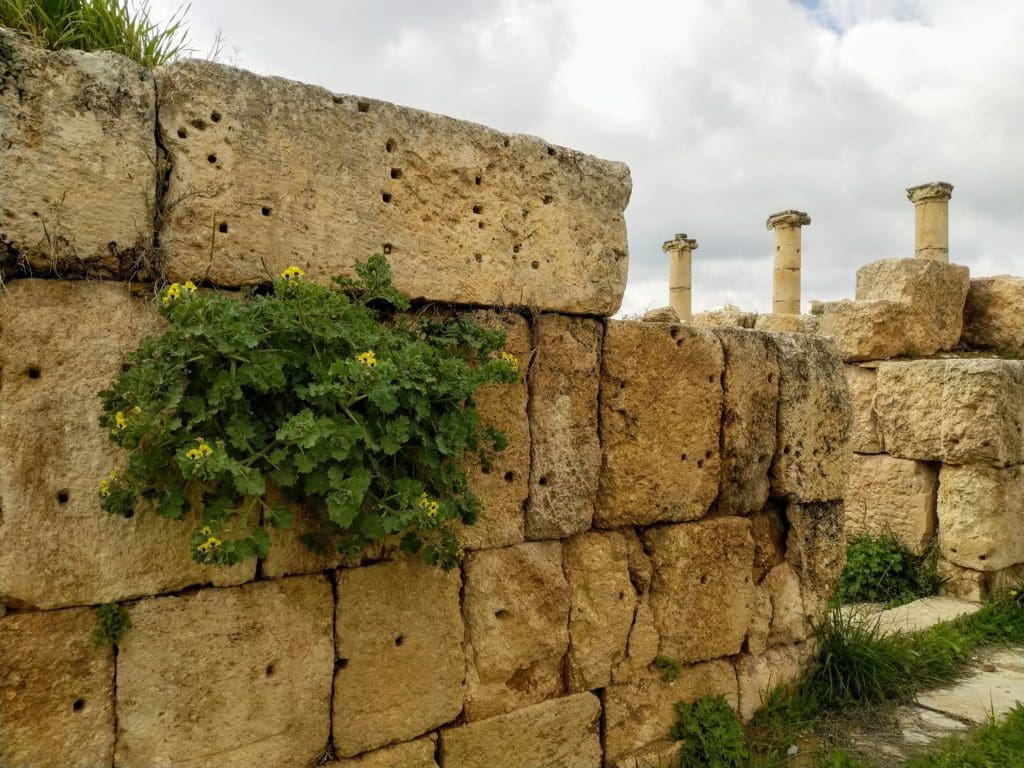 Jordan, located in the heart of the Holy Land, is intrinsically woven into biblical accounts throughout the Old Testament. Biblical sites in Jordan are many: Adam and Eve’s Garden of Eden may have been on the fertile northwest bank of the River Jordan. Moses led the Israelites through Jordan as they fled Egypt, and prophets Abraham and Job heard God’s word there.
Jordan, located in the heart of the Holy Land, is intrinsically woven into biblical accounts throughout the Old Testament. Biblical sites in Jordan are many: Adam and Eve’s Garden of Eden may have been on the fertile northwest bank of the River Jordan. Moses led the Israelites through Jordan as they fled Egypt, and prophets Abraham and Job heard God’s word there.
The modern-day Hashemite Kingdom of Jordan welcomes Christian pilgrims to discover the well-preserved religious sites where Biblical leaders worked and worshiped. Jordan is predominantly Muslim but has a great tolerance for religious diversity. Religion is an open topic that people discuss freely.
Bethany Beyond the Jordan
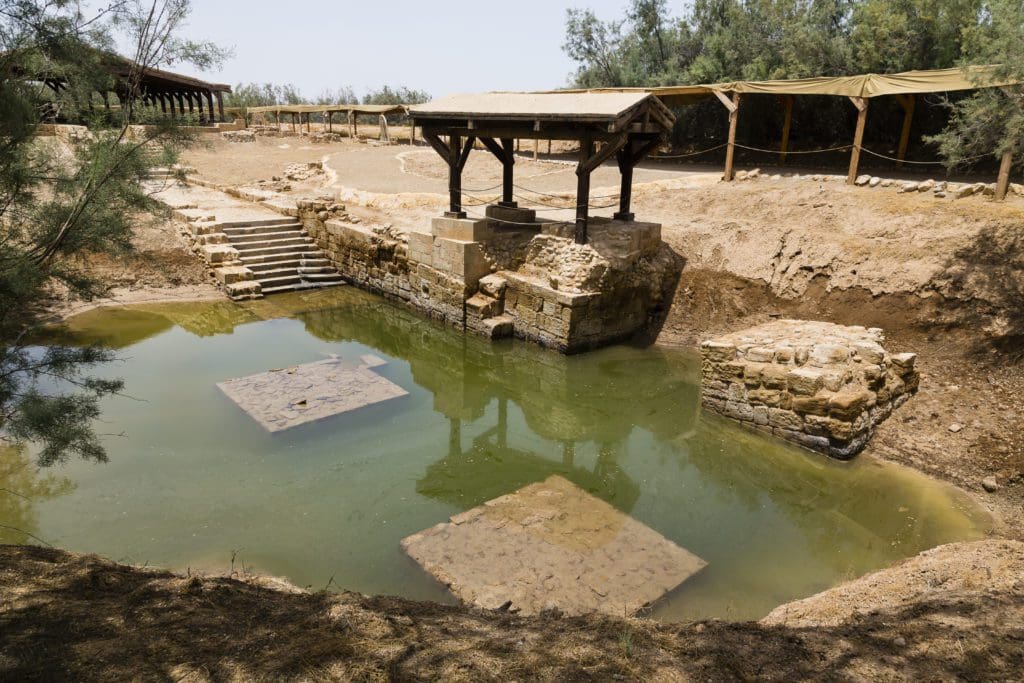
In 1996, this settlement site on the east bank of the Jordan River was rediscovered and verified as the place where John the Baptist lived and performed baptisms (John 1:28). Adding to the sacred significance, Jesus was baptized by John (Matthew 3:13-17) and began his ministry by enlisting his first disciples – Simon, Peter, Andrew, Philip, and Nathaniel there. This is also the area where scripture says that the prophet Elijah ascended into heaven on a chariot of fire (2 Kings 2).
Madaba
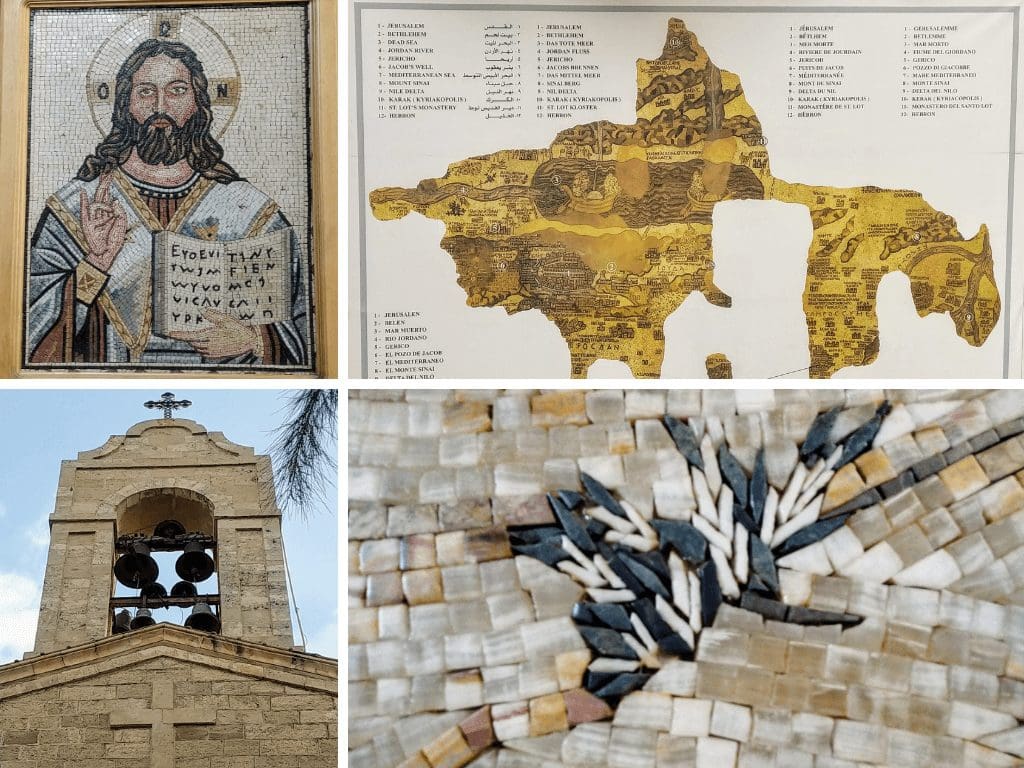
The Bible mentions Madaba and the vicinity of central Jordan multiple times. Stories that took place in Madaba (Medeba in the Bible) include Exodus, David’s war against the Moabites (2 Samuel 8:2), as well as Isiah’s prophecy of doom for Moab (Isaiah 15:1-9), and Moab’s rebellion against Israel (2 Kings 1:1).
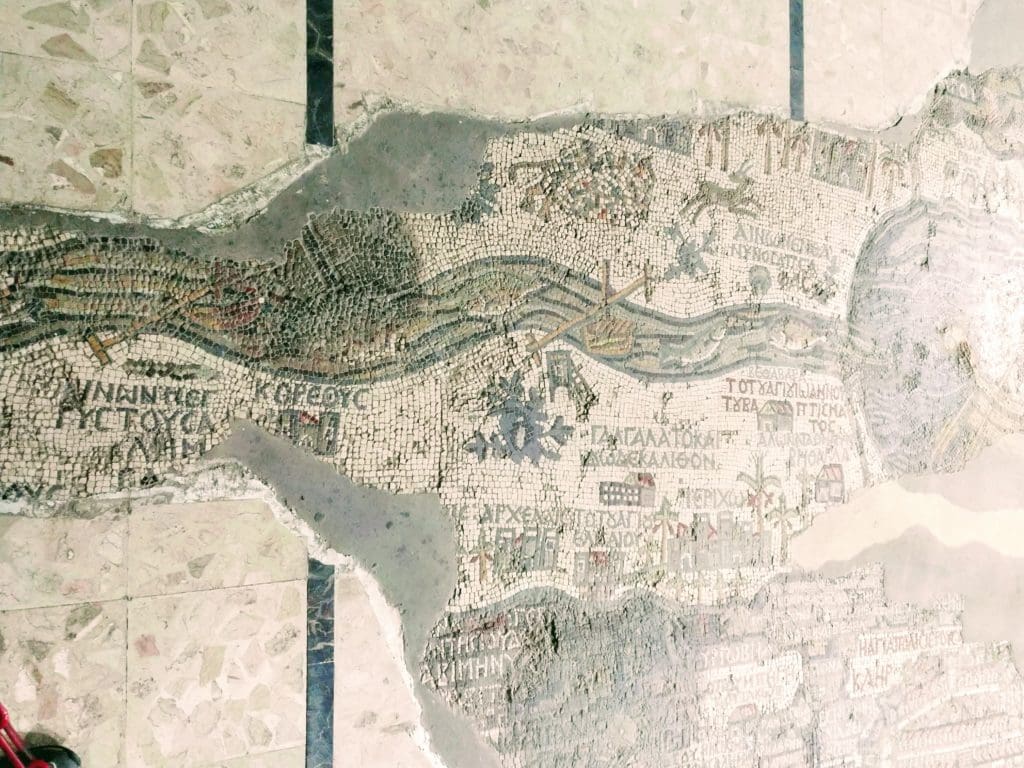
Madaba has a long-standing reputation for its fine mosaic art. Rich collections of early Byzantine mosaics are on display at the Madaba Archeological Park but the most amazing display is the world-famous 6th-century mosaic map of Jerusalem and the Holy Land in the Orthodox Church of St. George. The masterpiece covers the floor of the church and is the earliest surviving religious map of the Holy Land in any form.
Mount Nebo
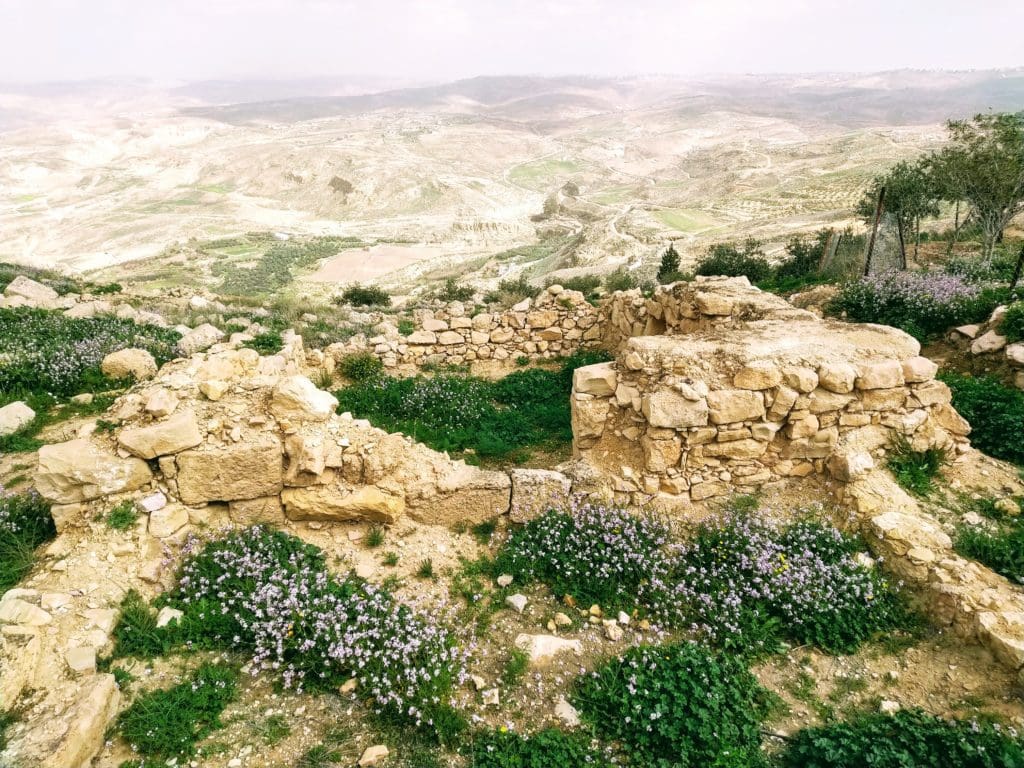
Mount Nebo is a high, windy outcrop in Jordan that overlooks the Dead Sea and much of the Holy Land. This was Moses’ last stop on the Exodus from Egypt. He could see the Holy Land of Canaan – on a clear day you can see Jerhico and Jerusalem – but God didn’t allow him to complete the journey (Deuteronomy 32:48-52). He died on Mount Nebo, but his tomb has never been found. It’s also believed that the prophet Jerimiah hid the Arc of the Covenant in a cave on Mount Nebo, but that has never been found either.
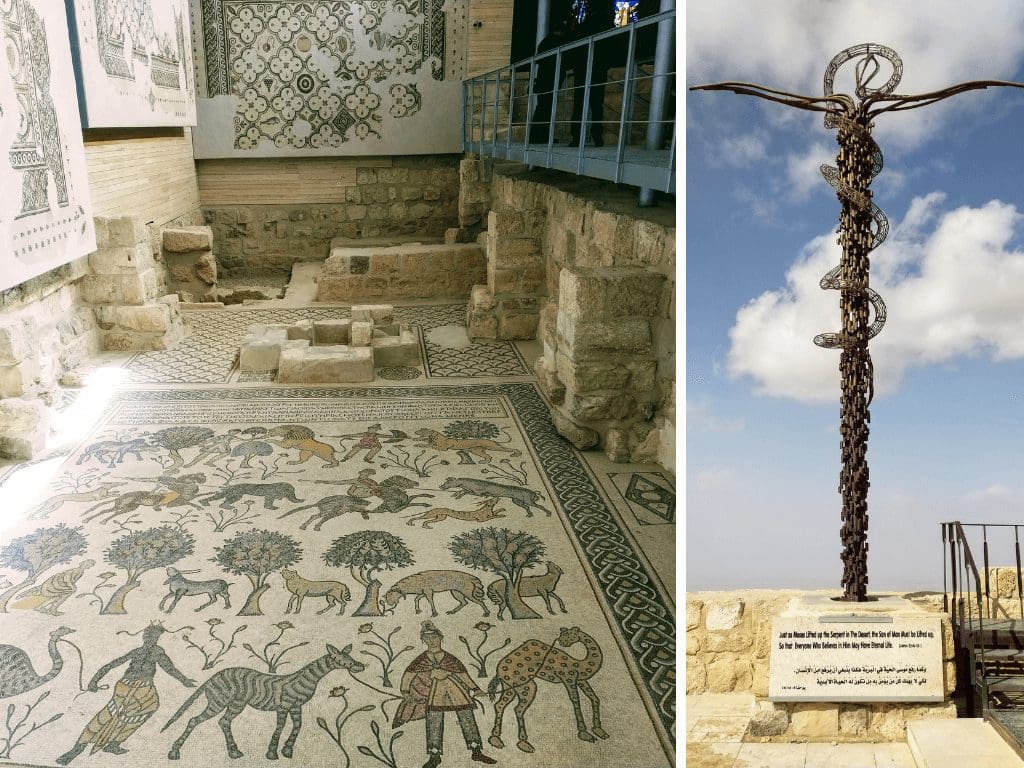
In the 4th century, Christians built a church at the top of Mount Nebo to commemorate Moses. The church ruins contain spectacular mosaics. Outside, a Serpentine Cross overlooks the panoramic view. The serpent represents the bronze serpent Moses took into the desert to protect his people, and the cross represents Jesus’ crucifixion. Centuries later, the symbol of the Serpentine Cross came to represent the curative abilities of the pharmaceutical industry.
Dead Sea
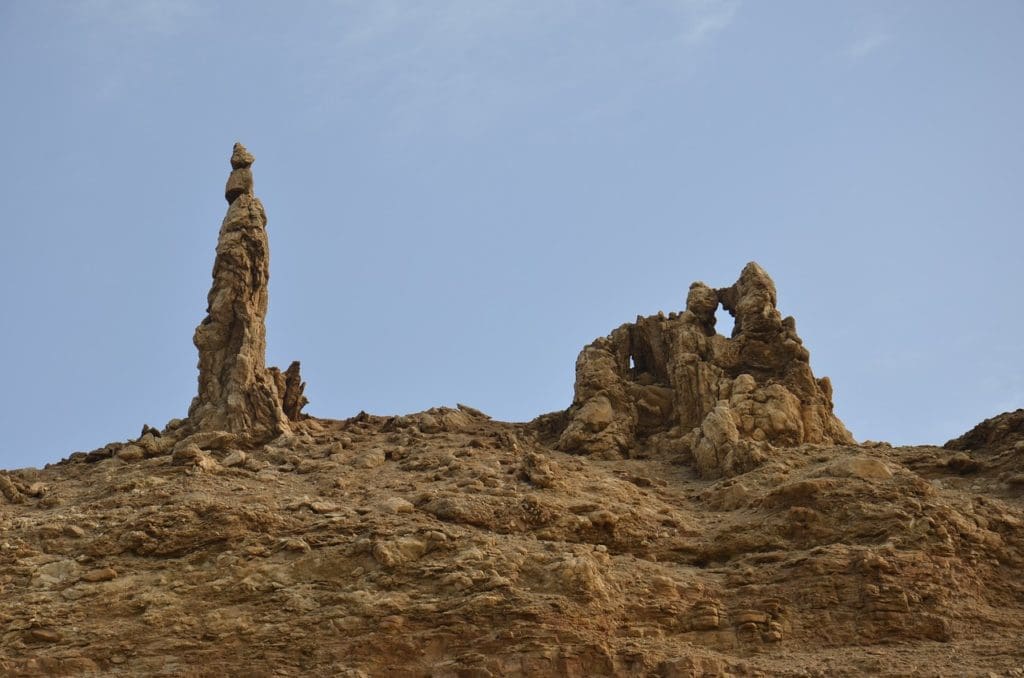
The Dead Sea was called the Salt Sea in the Bible. In one dramatic story, God was going to destroy the notoriously decadent cities of Sodom and Gomorrah that sat on the Dead Sea Plain. Abraham argued that Lot and his family should be allowed to escape since they were virtuous. God agreed but told them to leave and not look back. Lot’s wife couldn’t stand it and looked, so she was instantly turned into a pillar of salt (Genesis 19:24-26). Legend has it that today, Lot’s wife still stands as a rock formation, frozen in time because of her disobedience.
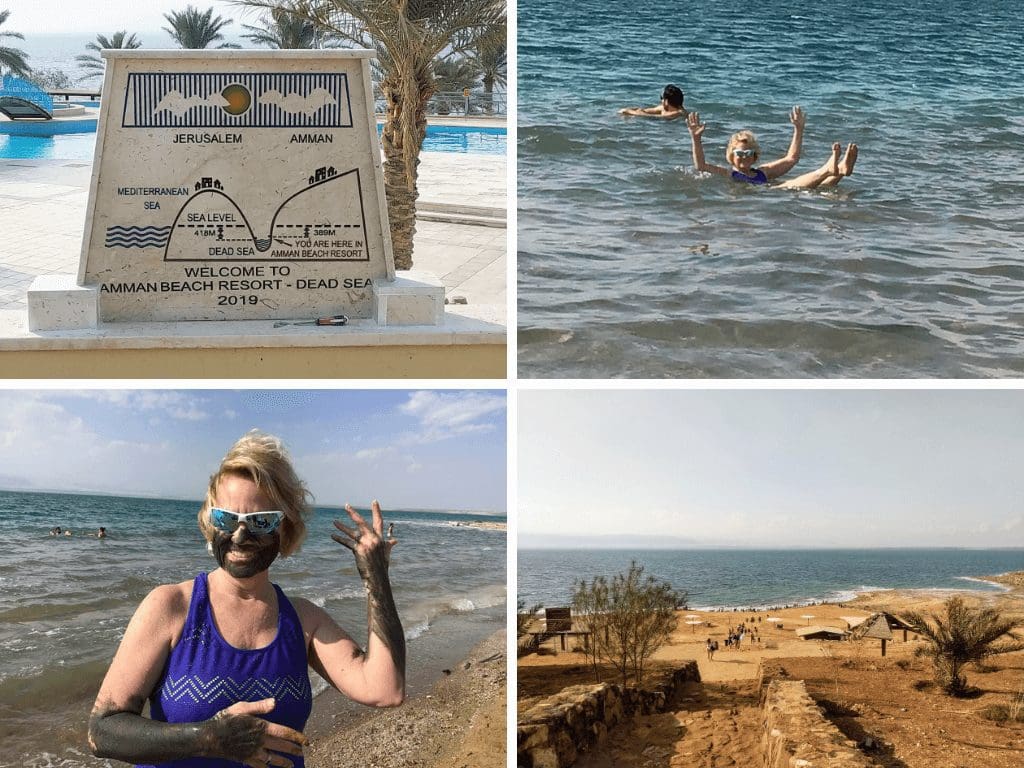
The Dead Sea is the lowest land point on earth at more than 1,400 feet below sea level and the water continues to evaporate rapidly. The highly mineral-concentrated water and mud have the reputation of having restorative and healing powers. The water is so dense, you can float with hands and feet in the air, practically sitting on the water. Hotels and day beach resorts offer mud baths and spa treatments that purport to turn back time on your skin.
Amman & the Kings Highway
The capital of Jordan is a modern city in the north with many hotels (from luxury to basic), a variety of restaurants, museums, shops, and everything a contemporary traveler needs. It’s also home to ancient Roman ruins including a theatre, a temple, and Byzantine churches.
In Biblical times, the King’s Highway connected Rabath Ammon (Amman) to the southern cities. Moses requested passage on the King’s Highway during the Exodus but was declined (Numbers 20:14-21). Undoubtedly, many other Biblical figures used the thoroughfare as they went about their life’s work in Jordan.
Petra
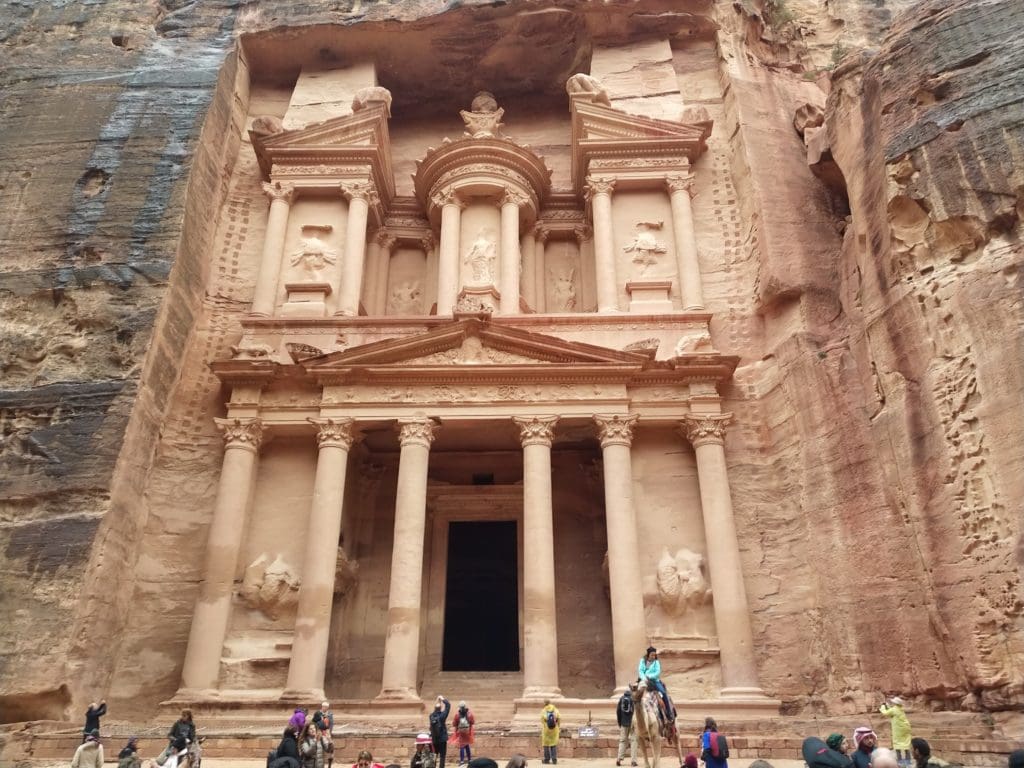 Petra, the city hewn from rock, was ruled by the Nabateans from the 3rd century BC until the early 2nd century AD when the Romans took control. Moses passed through the area and legend has it that it was at the spring in Wadi Musa (Valley of Moses) where he struck the rock and rebelled against God (Numbers 20:10-13), leading to his ultimate demise on Mount Nebo. Aaron, brother of Moses also displeased God, so he, too, was ‘gathered to his people’ and buried at Jabel Harun (Mount Hor) (Numbers 20:22-24).
Petra, the city hewn from rock, was ruled by the Nabateans from the 3rd century BC until the early 2nd century AD when the Romans took control. Moses passed through the area and legend has it that it was at the spring in Wadi Musa (Valley of Moses) where he struck the rock and rebelled against God (Numbers 20:10-13), leading to his ultimate demise on Mount Nebo. Aaron, brother of Moses also displeased God, so he, too, was ‘gathered to his people’ and buried at Jabel Harun (Mount Hor) (Numbers 20:22-24).
Since Petra was a major trading center on the Silk Road connecting Asia, Mesopotamia, Africa, and Europe, it was highly likely that it was the last stop for the three wise men as they traveled to Bethlehem with gifts of gold, frankincense, and myrrh for baby Jesus (Matthew 2:1-12).
Safety of Religious Travel in Jordan
Jordan is a safe and stable part of the Holy Land to visit. The ethnically diverse population is open and inviting to religious travelers seeking spiritual and cultural enrichment. English is widely spoken, and people are generous and hospitable. Although Jordan’s neighbors have suffered turmoil and war, it stands peacefully in the center of the ancient Holy Land.
To plan your visit to this fascinating land, contact the vacation experts at Covington.







Beautifully written article about Jordan. It was such a pleasure to visit the country with you. I certainly want a return visit.